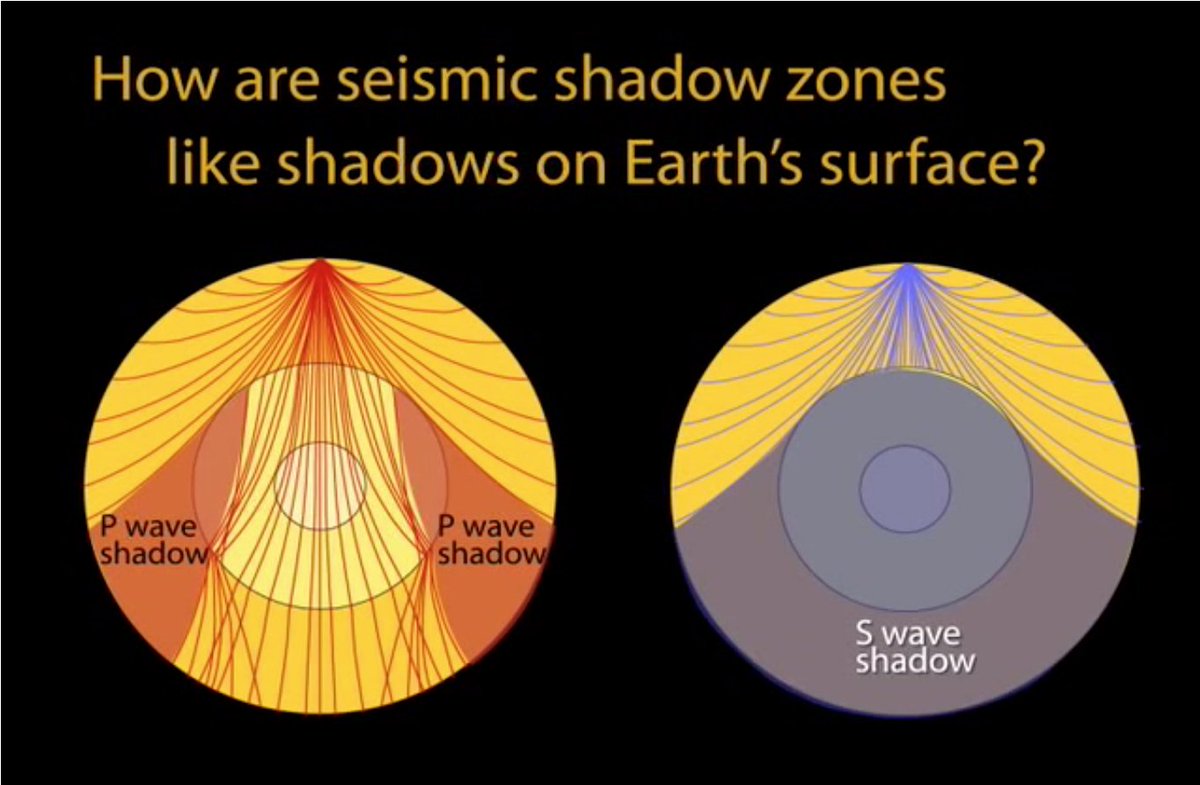

^ a b c Greenwood, Margaret Stautberg Bamberger, Judith Ann (August 2002).^ a b c "Why can't S-waves travel through liquids?".^ a b "Seismic Shadow Zone: Basic Introduction- Incorporated Research Institutions for Seismology".^ "Snell's Law - The Law of Refraction".^ a b c d e "CHAPTER 19 NOTES Earth's (Interior)".Cambridge, UK: Cambridge University Press. The solid earth: an introduction to global geophysics (2nd ed.). A dictionary of earth sciences (3rd ed.).

"Tribute to Deceased Fellows of the Royal Society". The three properties are: The three properties are: incompressibility ( k : CS1 maint: others ( link) The reason for this is P wave and S wave velocities are governed by different properties in the material which they travel through and the different mathematical relationships they share in each case.

Additionally, S waves that refract to P waves on entering the outer core and then refract to an S wave on leaving the outer core can also be detected in the shadow zone ( SKS waves). However, P waves that travel refract through the outer core and refract to another P wave (PKP wave) on leaving the outer core can be detected within the shadow zone. This is considered the S wave shadow zone. The S waves cannot pass through the liquid outer core and are not detected more than 104° (approximately 11,570 km or 7,190 mi) from the epicenter. This is considered the P wave shadow zone. In this case, the P waves refract due to density differences and greatly reduce in velocity. This is due to Snell's law, where a seismic wave encounters a boundary and either refracts or reflects. The P waves are refracted by the liquid outer core of the Earth and are not detected between 104° and 140° (between approximately 11,570 and 15,570 km or 7,190 and 9,670 mi) from the hypocenter. P waves travel with motion in the same direction as the wave propagates and S-waves travel with motion perpendicular to the wave propagation (transverse). Two types of body waves travel through the Earth: primary seismic waves (P waves) and secondary seismic waves (S waves). When an earthquake occurs, seismic waves radiate out spherically from the earthquake's hypocenter. The main observational constraint on identifying liquid layers and/or structures within the earth come from seismology. Gutenberg attributed this due to a solid mantle and liquid outer core, calling it the Gutenberg discontinuity. In 1913, Beno Gutenberg noticed the abrupt change in seismic velocities of the P waves and disappearance of S waves at the core-mantle boundary. Oldham observed seismograms from various earthquakes and saw that some seismic stations did not record direct S waves, particularly ones that were 120° away from the hypocenter of the earthquake.

A liquid outer core was first shown in 1906 by Geologist Richard Oldham. The crust, mantle, and inner core are typically solid however, the outer core is entirely liquid. The earth is made up of different structures: the crust, the mantle, the inner core and the outer core.


 0 kommentar(er)
0 kommentar(er)
